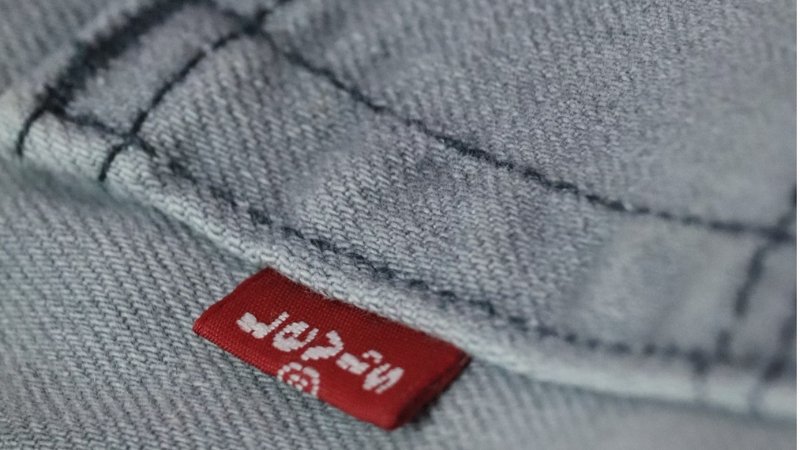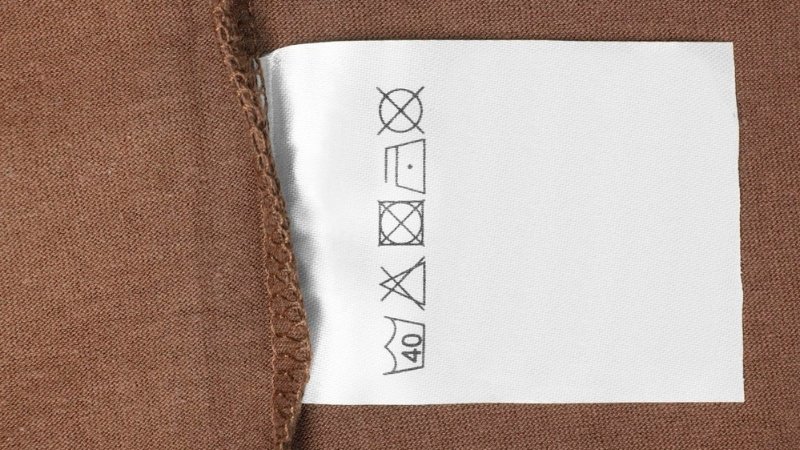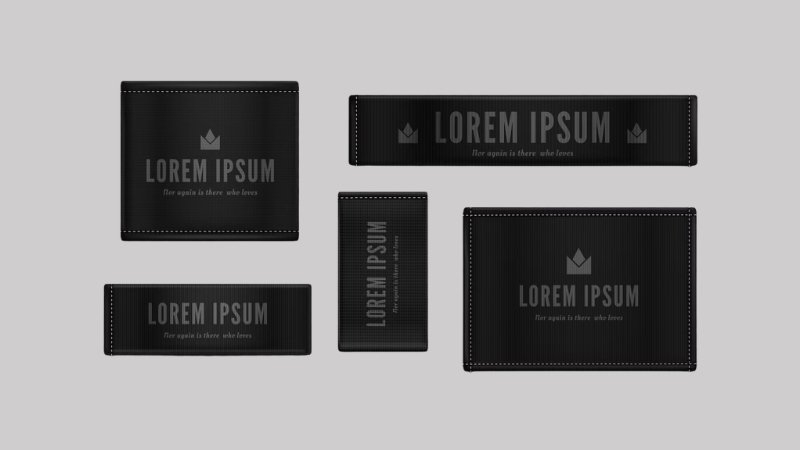What is a Label? Branding, Info And Compliance Guide
Labels are fundamental for establishing your brand identity directly on your items. They communicate vital product information, such as material content and care instructions, which customers rely on. Furthermore, proper labeling is often necessary to meet legal regulations and retailer requirements, playing a significant role in how customers perceive the quality and professionalism of your products.
This article will provide a clear understanding of what labels are, why they are indispensable for your small business, the common types available (like woven labels, printed labels, and hang tags), key information they must convey, and initial steps for choosing the right options for your brand’s specific needs, including navigating compliance labeling. Let’s start!
1. Why Labels Are Essential for Your Small Business Success
Beyond simply identifying an item, labels perform several crucial functions vital for the growth and success of small businesses in the competitive marketplace. Effective use of labels impacts branding, ensures necessary product information reaches the customer, and maintains legal compliance.

1.1 Building Brand Recognition and Identity
Labels serve as a primary touchpoint for showcasing your brand’s logo and visual style directly on the product. A thoughtfully designed, high-quality label – consider the difference between a soft, detailed woven label compared to a basic, stiff printed one – significantly elevates the perceived value and professionalism of the entire item.
Maintaining consistency across various label types, such as the main brand label sewn into a garment and the accompanying hang tag, reinforces your brand identity and helps customers recognize and remember your products.
1.2 Communicating Crucial Product Information
Labels are the primary vehicle for conveying important details about your product. This includes the size, material composition (crucial for customers with allergies or specific preferences like seeking natural fibers), unique features, or even specific usage tips beyond standard care instructions.
Clear communication of this product information informs purchasing decisions, ensures the customer uses the product correctly, and builds transparency and trust between the buyer and your brand. A fabric label clearly stating “100% Organic Cotton,” for example, directly addresses a specific customer need.
1.3 Meeting Legal & Retail Compliance Needs
Specific labeling requirements are mandatory in many markets, particularly for apparel. Common regulations, varying by region (e.g., regulations enforced by the Federal Trade Commission (FTC) in the US or similar bodies in the EU), often dictate the inclusion of care instructions (using standard washing symbols or text), fiber content percentages, and the Country of Origin (COO – specifying where the product was manufactured).
Beyond legal mandates, many retailers, from large department stores to small boutiques, enforce their own additional labeling standards for the products they carry. Failure to comply with these regulations can lead to significant consequences, including fines, shipments being delayed or confiscated at customs, products being removed from sale, and damage to your business’s reputation. Careful verification of the specific compliance labeling rules for your target markets is essential.
1.4 Enhancing the Customer Experience
Thoughtful labeling contributes directly to a positive customer experience. Easily accessible and understandable information, such as clear sizing on a size label and legible care instructions on a care label that doesn’t scratch the skin (like soft woven labels or tagless printed options), reduces customer frustration and improves the usability of the product.
Informative hang tags can also add value, perhaps sharing a part of your brand story or offering styling tips. This attention to detail fosters trust and can contribute significantly to building customer loyalty and enhancing overall brand value.
2. Defining “Label”: Beyond the Dictionary Definition
While dictionaries offer a basic definition, the practical meaning of “label” within the product and apparel industry is more nuanced and functional. Understanding these distinctions helps clarify communication with suppliers and ensures you select the right type for your needs.
2.1 The Core Function: Identification & Description on Your Item
At its core, a label is a piece of material – commonly paper, cloth (like satin, cotton, or woven polyester), plastic, or occasionally metal – attached to a product, garment, or its packaging. The primary purpose remains identification and description. A label distinguishes your product from competitors and provides necessary details about the specific item being sold.
2.2 Labels vs. Tags vs. Stickers: Practical Distinctions
Confusion often arises between the terms “label,” “tag,” and “sticker.” In practice, within the apparel and product industries:
- Label: Often implies a more permanent attachment or a specific function, such as a sewn-in brand label or care label inside a garment. These are typically made of fabric (woven label or printed label).
- Tag: Frequently refers to detachable items, most commonly hang tags (also known sometimes as swing tags). These are usually made of cardstock and attached via string or plastic fasteners for retail display, carrying branding, pricing, or barcode information.
- Sticker: Specifically denotes an adhesive label, usually made of paper or vinyl, designed to be stuck onto packaging (like boxes or poly mailers) or sometimes directly onto the product surface.
Rather than strict dictionary definitions, the function (branding, care instructions, pricing) and the attachment method (sewn, adhesive, tied) are generally better guides for understanding how these terms are used in the business context.
3. Exploring Common Label Types for Clothing & Consumer Goods
Various label types serve different purposes, offering distinct aesthetics, durability levels, and suitability for various materials. Focusing on those most relevant for apparel and general consumer products helps simplify the selection process. Key options include woven labels, printed labels, hang tags, and adhesive stickers.

3.1 Main Brand Labels: Woven vs. Printed
These labels prominently display your brand name or logo, usually sewn or heat-applied inside a garment.
Woven Labels: Created by weaving threads (commonly polyester, using techniques like damask, taffeta, or satin weaves) together to form the design and text.
- Characteristics: Offer durability and a classic, often perceived high-end, feel. Best suited for simpler logos and text due to the weaving process. Available in various folds (like center fold, end fold, loop fold) to suit different attachment styles.
- Considerations: Limitations in rendering very fine details or complex color gradients. Can sometimes have a higher per-piece cost, especially at lower order volumes compared to printed options.
Printed Labels: Produced by printing ink directly onto a ribbon substrate (materials like satin, cotton, nylon, or TPU – thermoplastic polyurethane).
- Characteristics: Excellent for reproducing intricate details, photographic images, and smooth color gradients. Often provide a very smooth surface, making them a good choice for “tagless” labels placed at the neck for enhanced comfort against the skin. Frequently cost-effective, particularly for multi-color designs or smaller quantities.
- Considerations: While durable, the printed ink’s longevity might be slightly less than woven threads over extensive washing and wear cycles under harsh conditions.
Choosing between woven and printed fabric labels involves balancing the desired aesthetic (premium feel vs. fine detail), budget constraints, durability requirements for the garment’s lifespan, and comfort considerations, especially for labels touching the skin. A custom label supplier can guide you through these options.
| Feature | Woven Label | Printed Label |
|---|---|---|
| Durability | Generally very high, withstands many washes | Good, but ink may fade slightly over long term/harsh washes |
| Detail | Good for text/simpler logos; fine detail limited | Excellent for complex graphics, gradients, photos |
| Feel/Texture | Can have texture, perceived as premium | Often smoother, suitable for tagless comfort |
| Cost Factor | Can be higher per piece at low volumes | Often more cost-effective, especially for complex designs/low qty |
3.2 Care Labels: Essential & Informative
These labels fulfill the crucial, often legally required, function of providing garment care instructions. They typically use standardized washing symbols and/or text to detail how to wash, dry, bleach, and iron the item correctly.
Common materials include printed nylon taffeta or satin ribbon, chosen for their durability through numerous wash cycles and the clarity of printed information. Care labels are usually sewn into a side seam or placed beneath the main brand label to comply with compliance labeling requirements for garment care.
3.3 Size Labels: Simple but Critical
The purpose of a size label is straightforward: clearly indicate the garment size (e.g., S, M, L, 38/40). These often take the form of small, separate woven tabs sewn near the main label or neck seam. Alternatively, size information is frequently integrated directly into the main brand label or onto the same strip as the care label. While simple, accurate and easily visible sizing is critical for retail sorting, inventory management, and customer selection.
3.4 Hang Tags / Swing Tags: Point-of-Sale Branding
Hang tags (or swing tags) provide valuable branding and information at the point of sale and are designed to be removed by the customer after purchase. They serve as prime real estate for displaying the brand logo, pricing, barcode, website address, social media handles, or even a short brand story.
While typically made from cardstock (available in various weights and finishes like matte, gloss, or textured), materials can range widely—including plastic, metal, wood, or even fabric—to create a unique branding statement.
Common attachment methods involve string (cotton, twine, ribbon), plastic fasteners, or safety pins. This is an excellent opportunity for brand storytelling and making a strong first impression on potential buyers.
3.5 Adhesive Labels & Stickers: Packaging & Product Versatility
Adhesive labels, or stickers, offer immense versatility, particularly for packaging and non-apparel items. Common applications include: branding on poly mailers or shipping boxes, securing tissue paper wrapping, providing product information on hard goods (like candles, jars, or electronics), serving as promotional giveaways, or carrying barcode labels for inventory.
Material options vary, with paper stickers being cost-effective and available in numerous finishes, while vinyl labels (including PET – polyethylene terephthalate, or BOPP – biaxially-oriented polypropylene) offer greater durability, water resistance, and even clear background options. These rely on pressure-sensitive adhesive (PSA), which can be formulated for permanent or removable applications depending on the need.

4. Key Information Your Labels Need to Communicate
Beyond the physical type and material, the actual content conveyed by your labels is paramount. This information serves branding purposes, provides functional details, and often satisfies legal requirements.
4.1 Legally Required Information
Compliance labeling is non-negotiable. While specifics vary significantly by country and product type, common requirements, especially for apparel sold in markets like the US and EU, include:
- Fiber Content: Accurate listing of materials by percentage (e.g., “80% Cotton / 20% Polyester”). Regulations often dictate terminology and order.
- Country of Origin (COO): The mandatory “Made in…” statement indicating where the product was substantially manufactured.
- Care Instructions: As mentioned, standard symbols and/or text detailing washing, drying, ironing, etc., are typically required for clothing.
- Manufacturer/Importer Identity: In some regions (like the US with its RN system – Registered Identification Number), identification of the responsible business entity might be required.
Crucial Note: These requirements are strict and subject to change. Always verify the specific regulations for each market where your products will be sold through official government resources (like the FTC in the USA) or by consulting with compliance experts.
4.2 Brand & Marketing Elements
These components reinforce your brand identity and connect with customers:
- Brand Logo & Name: The most fundamental element for identification. Consistency in presentation across all labels and marketing materials is key.
- Website/Social Media: Particularly effective on hang tags, providing a direct link for customer engagement and further information.
- Slogan/Brand Story: A brief tagline or narrative snippet, usually placed on hang tags, can add personality and convey brand values.
4.3 Functional Details
This information facilitates the sale, tracking, and use of the product:
- Size: Must be clear, accurate, and easily located by the customer (often on a dedicated size label or integrated into the main/care label).
- Barcode (UPC/EAN): Essential for retail scanning, efficient checkout processes, and inventory management. UPC (Universal Product Code) is common in North America, while EAN (European Article Number) is used widely elsewhere.
- QR Codes: A versatile option (often on hang tags) to link customers to supplementary online content, such as detailed size guides, styling suggestions, product care videos, or your website. This aids in product identification and enhances customer interaction.
5. First Steps in Choosing the Right Label for Your Needs
With an understanding of the types and required information, making the initial choices involves practical considerations about your product, brand, and production capabilities. Selecting the appropriate label material, ensuring durability, determining the best attachment method, and aligning the design are key starting points.
5.1 Material & Durability Considerations
Begin by considering the product itself and its intended use. Ask questions like: How will the product be cared for (e.g., machine washed, dry cleaned, hand washed)? How long does the label need to remain legible and intact relative to the product’s expected lifespan? Clothing, for instance, requires washable labels made from materials like woven polyester, printed satin, or durable cotton. Items exposed to the elements might need vinyl labels.
The required durability directly influences the best label material choice, whether a sturdy woven label, a washable printed fabric label, a standard paper label for short-term use, or a weather-resistant vinyl label. Ensure the label’s lifespan matches the product’s expected use.
5.2 Attachment Method: How Will It Stay On?
How the label will be affixed is another critical decision, often dictated by the product type and your manufacturing process. The main options include:
- Sew-in: The standard for apparel brand and care labels, offering high durability. Various fold types (like end fold, center fold, loop fold, or miter fold) affect the final look and placement options.
- Heat Seal / Iron-on: An alternative for apparel, sometimes used for a smoother ‘tagless label’ finish inside garments. Requires specific heat press equipment for application.
- Adhesive (PSA): The method for stickers and adhesive labels used on packaging or hard goods. Consider whether a permanent or removable adhesive is needed.
Evaluate what is feasible for your production setup (do you have sewing capabilities, access to heat presses?) and what method best suits the product material and desired aesthetic.
5.3 Design Alignment with Your Brand Aesthetic
Remember that the label is an integral part of your product’s design and overall brand communication. Ensure the label design adheres consistently to your established brand guidelines, including colors (match Pantone references if applicable), fonts, and logo usage.
Ask yourself: Does the chosen label feel like your brand? For example, a rustic, earthy brand might opt for a textured craft paper hang tag and a simple cotton main label, whereas a sleek, modern brand might choose a high-definition woven satin label and a minimalist hang tag.
The visual and tactile elements should work in harmony with your brand identity and product presentation. Creating a custom label that reflects your unique brand aesthetic is crucial.
5.4 Considering Sustainability
Sustainability is an increasingly important factor for both businesses and consumers. Exploring eco-friendly label options can align with brand values and appeal to environmentally conscious customers. Examples include:
- Recycled Materials: Woven labels made from recycled polyester (rPET, often derived from plastic bottles), hang tags printed on recycled paper or cardstock.
- Organic Fibers: Labels made from organic cotton.
- Biodegradable/Compostable Options: While available (e.g., some bioplastics for stickers), carefully verify certifications and understand their specific end-of-life requirements and limitations.
- Sustainable Inks: Using vegetable-based or soy-based inks.
Consumer interest in sustainable products is growing, and highlighting the use of eco-friendly labels can enhance your brand’s image. Many suppliers now offer these choices; for instance, specialists like Packlove provide options such as labels crafted from recycled polyester, supporting brands committed to reducing environmental impact. Discussing these possibilities with your label provider is a worthwhile step.
6. Related Questions
6.1 What’s the real difference between a label and a tag in the apparel industry?
In practical terms, “label” usually refers to a piece of material permanently attached to the garment, like a sewn-in brand or care label. “Tag” typically means a detachable item, most often a hang tag made of cardstock, used for retail information like price and branding, and removed before wearing. Function and permanence are the key distinctions.
6.2 How much do custom clothing labels typically cost?
The cost of custom labels varies greatly based on several factors: the type (woven, printed, hang tag), material used, size, number of colors in the design, order quantity (higher quantities usually mean lower per-piece cost), and any special finishes. Providing exact price ranges is difficult without specific details. The best approach is to get quotes from potential suppliers based on your specific requirements.
6.3 Are care labels a legal requirement for clothing sold in the US?
Yes, generally, the Federal Trade Commission (FTC) requires apparel sold in the US to have permanently attached care labels providing instructions for ordinary care. Similar regulations exist in many other major markets like the EU and Canada. Always verify the specific current requirements for the markets you intend to sell in, as regulations can be detailed and subject to change.
6.4 Can I get eco-friendly labels for my products?
Absolutely. Many label suppliers now offer sustainable options. Common choices include woven labels made from recycled polyester (rPET), printed labels on organic cotton ribbon, and hang tags made from recycled paper or cardstock. Discuss your interest in eco-friendly labels with potential suppliers to explore the specific materials and certifications they offer.
Read more:
Labels, though small, are powerful, multi-functional tools for any small business, especially in the apparel sector. They serve critical roles in identification, communicating essential product information, ensuring legal and retail compliance, and fundamentally shaping your brand identity.
From the durable weave of a main brand label to the informative content on a hang tag, each element contributes to the customer’s perception and experience. For personalized guidance on finding the perfect custom label solutions tailored to your brand’s unique needs and aesthetic, consider exploring resources or consulting with labeling specialists.






















